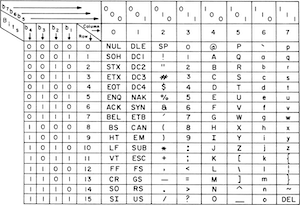Ascii85 Decoder (Base85 To Text Converter)
About ASCII85 / Base85 Decoder Tool
This ASCII85 decoder tool, also known as the Base85 decoder! Our free online tool makes it easy for you to decode your ASCII85 encoded message into plain text message. With this tool, you can convert any ASCII85 encoded text into readable and understandable plain text.
You can use our decoder tool for ASCII85 encoded text in any of the 4 different formats: text, decimal byte, hexadecimal byte, and binary byte. Simply paste your ASCII85 encoded text into the input box, select the format of your input text, and click the "Decode" button to convert it into plain text. Our tool will quickly and accurately decode your input text into plain text that you can easily read and understand.
Steps for using the ASCII85 decoder tool:
-
First select the input type:
- Text: Your input should be in Ascii85 text code. Example D0^57@q'.oF"Us@D#.
- Decimal Byte: Your input should be in Ascii85 decimal code. Example 68 48 94 53 55 64 113 39 46 111 70 34 85 115 64 68 35.
- Hexadecimal Byte: Your input should be in Ascii85 hexadecimal byte code. Example 44 30 5E 35 37 40 71 27 2E 6F 46 22 55 73 40 44 23.
- Binary Byte: Your input should be in Ascii85 binary byte code. Example 01000100 00110000 01011110 00110101 00110111 01000000 01110001 00100111 00101110 01101111 01000110 00100010 01010101 01110011 01000000 01000100 00100011.
- Then enter or paste your Ascii85 encoded message in the input text box.
- Finally press the Decode button.
- The Ascii85 encoded message will be decoded to a plain text message and appears in the output box below.
About ASCII85 / Base 85 Decoding

ASCII85 decoding is the process of converting ASCII85 encoded text into its original binary format. ASCII85 encoding is a binary-to-text encoding method that uses a set of ASCII characters to represent binary data, typically used in situations where binary data needs to be transmitted as plain text, such as in communication protocols and file formats.
ASCII85 encoding is similar to other encoding methods like Base64, but it has several advantages, such as a higher character density, which makes it more space-efficient, and the ability to represent null bytes, which Base64 cannot do.
To decode ASCII85 encoded text, a decoding algorithm is used. The algorithm works by converting groups of four ASCII85 characters into four corresponding bytes of binary data. Each ASCII85 character is first converted to its corresponding integer value using a simple algorithm. The resulting four integers are then combined into a single 32-bit integer, which is then converted into four bytes of binary data.
If the ASCII85 encoded text is not a multiple of four characters long, padding characters are added to the end of the text to make it a multiple of four characters long. These padding characters are typically represented by the ASCII character 'u', which has a value of 117.
Once the ASCII85 encoded text has been decoded into binary data, it can be used in any application that requires binary data, such as image processing or encryption. The decoded binary data can be saved as a file or sent over a network connection.
In summary, ASCII85 decoding is the process of converting ASCII85 encoded text into binary data. This process involves using a decoding algorithm to convert groups of four ASCII85 characters into four corresponding bytes of binary data. The resulting binary data can be used in any application that requires binary data, and it provides a more space-efficient and flexible method of representing binary data as plain text.
Reference
- About Ascii85 or Base85 at wikipedia.org
Page Last Modified On: Apr 13, 2023
Disclaimer: We took every effort to provide higher level of accuracy in the calculators, converters and tools we have added to www.MyTecBits.com Tools section. But, we cannot give any guarantee or can be held responsible for any errors, defects, faults or mistakes in any of the calculators, converters or tools. Please see detailed terms of use and liability disclaimer in Terms of Use Page.